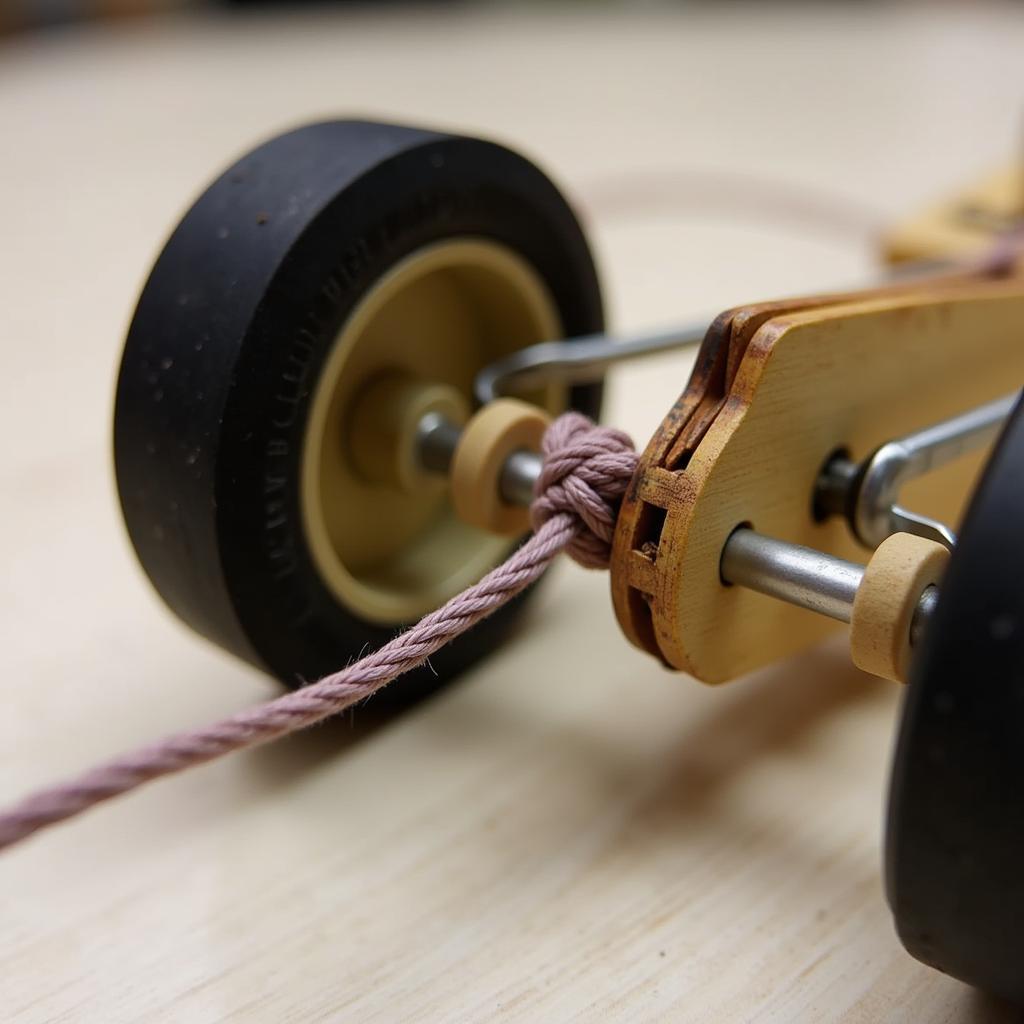Building a mousetrap car is a classic science project that teaches about energy, motion, and engineering principles. But, as any seasoned mousetrap car builder knows, getting your creation to perform optimally can be a lesson in patience and problem-solving. If your mousetrap car isn’t performing as well as you’d hoped, don’t despair! This guide will walk you through common mousetrap car problems and provide practical solutions to get your car back on track.
Understanding the Mechanics of a Mousetrap Car
Before diving into troubleshooting, it’s helpful to understand the basic mechanics of a mousetrap car. Essentially, the mousetrap serves as the engine, storing potential energy that’s released when the trap snaps shut. This energy is then transferred to the wheels through a string tied to a drive axle, propelling the car forward. Friction, weight distribution, and aerodynamics all play crucial roles in determining your car’s performance.
Common Mousetrap Car Problems and Solutions
1. My Mousetrap Car Won’t Move
Possible Causes:
- String not wound tightly: Ensure the string is wrapped tightly around the drive axle. Any slack will prevent the energy from the mousetrap from transferring effectively to the wheels.
- String slipping on the axle: If the string is slipping on the axle, try roughening the axle’s surface with sandpaper or wrapping it with a layer of tape to increase friction.
- Mousetrap not snapping with enough force: Make sure the mousetrap you’re using is new or in good working condition. An old or weak mousetrap won’t provide enough power to propel the car.
Solution:
- Double-check that the string is wound tightly around the axle, making sure it doesn’t overlap itself.
- If slippage is an issue, create a notch on the axle for the string to sit in or secure the string with a drop of glue designed for plastic.
- If using an old mousetrap, consider replacing it with a new one to ensure optimal spring tension.
 Mousetrap Car String Setup
Mousetrap Car String Setup
2. My Mousetrap Car Runs for a Short Distance
Possible Causes:
- Excessive friction: Friction between the moving parts of your car, such as the axles and wheels, can significantly hinder its performance.
- Poor wheel alignment: If the wheels aren’t aligned correctly, they’ll create drag and reduce the car’s efficiency.
- Weight distribution: An uneven weight distribution can make the car unstable and reduce its overall distance.
Solution:
- Reduce friction: Use lightweight, low-friction materials for the axles, wheels, and any other moving parts. Lubricate the axles with graphite powder or a light machine oil to further minimize friction.
- Align the wheels: Ensure the wheels are straight and securely attached to the axles. Use a ruler or a straight edge to verify the alignment.
- Optimize weight distribution: Aim for a balanced weight distribution, with the center of gravity slightly forward of the rear axle. Use coins or small weights to adjust the weight distribution as needed.
3. My Mousetrap Car Veers Off Course
Possible Causes:
- Uneven wheel rotation: If one wheel is rotating faster or slower than the others, it will cause the car to veer off in that direction.
- Torque steer: Torque steer occurs when the force of the mousetrap snapping causes the car to twist or turn.
Solution:
- Check for wheel obstructions: Examine the wheels and axles for any debris or imperfections that might be causing uneven rotation.
- Test wheel tension: Ensure the wheels are attached to the axles with consistent tension. One wheel that is too tight or too loose can throw off the car’s alignment.
- Adjust string alignment: The string pulling on the axle should be centered and straight. Even a slight misalignment can cause the car to veer.
Expert Insights
“One of the most common mistakes I see is people not giving their mousetrap car a proper test run before making adjustments. It’s crucial to establish a baseline to understand what needs improvement.” – Dr. Emily Carter, Mechanical Engineer
“Don’t underestimate the power of experimentation! Trying out different wheel sizes, materials, and even string types can drastically impact your car’s performance.” – Mark Johnson, Science Educator
Conclusion
Building a successful mousetrap car is all about trial and error. Don’t be afraid to experiment and make adjustments along the way. By understanding the common problems and implementing the solutions outlined in this guide, you’ll be well on your way to creating a mousetrap car that goes the distance!
Need further assistance with your mousetrap car project? Our team at AutoTipPro is here to help! Contact us at +1 (641) 206-8880 or visit our office at 500 N St Mary’s St, San Antonio, TX 78205, United States.




Leave a Reply